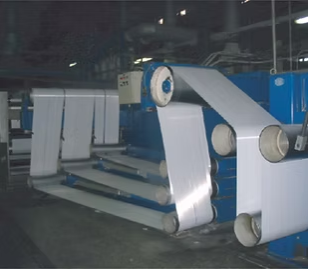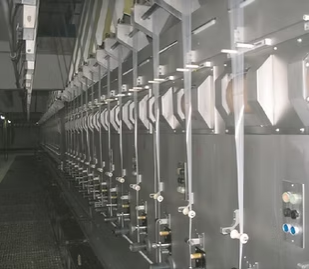How High-Modulus Basalt Fibers Improve Crack Resistance
- pioneerfiber

- Jun 26
- 2 min read
Information Tags
• Type: 4-minute read
• Audience: Construction professionals, engineers, architects, contractors

Introduction
Crack resistance is one of the most critical properties in high-performance concrete. While synthetic fibers like polypropylene help reduce surface cracking, they lack the structural stiffness needed to enhance load-bearing performance. High-modulus basalt fibers, derived from natural volcanic rock, provide both exceptional crack control and long-term toughness. Their mineral composition and elastic modulus of 86–90 GPa make them ideal for structural-grade fiber reinforcement.

How High-Modulus Basalt Fibers Improve Crack Resistance
The modulus of elasticity is a key factor in how fibers interact with early microcracks. High-modulus basalt fibers react quickly to tensile stress during concrete shrinkage and hardening phases.
Key mechanisms of crack resistance:
Early-age crack bridging, minimizing plastic and drying shrinkage cracks
Improved stress transfer due to higher stiffness compared to polypropylene
Enhanced post-crack behavior, preventing rapid propagation
Tighter crack width control, especially under cyclic and impact loads
Stable performance across temperature fluctuations, unlike synthetic low-modulus alternatives
Their mineral structure ensures firm bonding with the cementitious matrix, translating to longer-lasting structural performance.
Performance in Demanding Applications
High-modulus basalt fibers are used in environments where durability and dimensional stability are critical:
Precast panels, where precise crack control ensures visual and mechanical performance
Industrial flooring, resisting thermal expansion, shrinkage, and mechanical fatigue
Tunnels and mining shotcrete, where impact and flexural toughness are essential
Bridge decks and transportation structures, needing crack-resistant overlays
Asphalt concrete, where high-modulus fibers endure traffic and thermal stress better than PP
Their ability to span fine cracks and transfer stress makes them suitable for both early-age control and long-term structural reinforcement.
Basalt vs. Polypropylene: A Structural Advantage
Unlike polypropylene fibers (modulus typically < 5 GPa), high-modulus basalt fibers offer:
Higher tensile capacity (up to 3000 MPa)
Non-melting stability under fire exposure
Superior compatibility with high-strength cement matrices
No plastic degradation or creep under sustained load
These attributes allow basalt fibers to function not just as anti-crack agents but as genuine structural micro-reinforcement elements.
Conclusion: Cracking the Code with Basalt Technology
High-modulus basalt fibers redefine crack resistance in fiber-reinforced concrete. By combining stiffness, strength, and chemical stability, they deliver lasting reinforcement under demanding conditions. Whether used in precast, shotcrete, or hybrid cement-asphalt systems, these mineral-based fibers help engineers build more resilient, crack-resistant structures.
Explore PIONEER’s range of concrete reinforcement fibers and how they improve concrete properties. Visit our website: www.pioneerfibre.com
Micro fiber >> Learn More
Macro fiber >> Learn More
Steel fiber >> Learn More
Asphalt fiber >> Learn More
Contact us today to request samples, technical data, or a custom solution for your project.
Email: Sales@pioneerfibre.com | Email: Support@pioneerfibre.com
WhatsApp: +1 (929) 569-9989 | +86 151-6240-5106













Comments